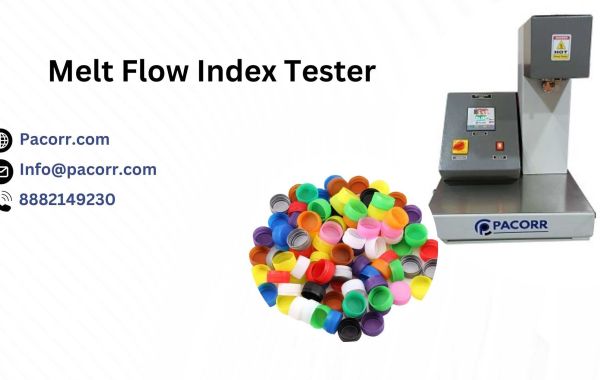As an essential tool for manufacturers, it provides vital data that aids in quality control, material selection, and production optimization. This article will delve into the significance of the Melt Flow Index Tester, how it works, and why it’s indispensable in the plastic industry.
What is Melt Flow Index (MFI)?
The Melt Flow Index (MFI) measures the viscosity of a polymer melt. It indicates how easily a thermoplastic material can flow under specific conditions, making it a critical parameter for assessing its processing behavior. The MFI is expressed in grams per 10 minutes (g/10 min) and is determined by applying a standardized load to the polymer at a specific temperature, typically 190°C for general-purpose plastics.
Importance of the Melt Flow Index Tester
- Quality Control: The MFI Tester ensures consistent product quality by enabling manufacturers to monitor the flow characteristics of their materials. By regularly testing samples, they can detect variations in material properties that could affect the final product.
Material Selection: When choosing the right polymer for a specific application, the MFI value provides insights into the flow behavior of the material. Lower Melt Flow Index Testing values indicate higher viscosity, suitable for applications requiring rigidity, while higher values suggest lower viscosity, ideal for applications needing flexibility.
- Processing Optimization: Understanding the MFI helps manufacturers optimize processing parameters, such as temperature and pressure, during extrusion or injection molding. This optimization leads to improved efficiency and reduced production costs.
How Does the Melt Flow Index Tester Work?
The Melt Flow Index Tester operates based on a simple yet effective principle. Here’s a step-by-step overview of the testing process:
- Sample Preparation: A small sample of the thermoplastic material is prepared, typically in the form of pellets.
- Heating: The tester heats the sample to the specified temperature, allowing it to melt uniformly.
- Loading: A specified weight is applied to the melted polymer, creating a pressure that forces it through a standardized die.
- Measurement: The amount of material extruded through the die is measured over a set time, usually 10 minutes. This measurement is recorded as the MFI value.
- Data Analysis: The results are analyzed to determine whether the material meets the required specifications for the intended application.
Applications of the Melt Flow Index Tester
The Melt Flow Index Tester Price is widely used across various industries, including:
- Plastics Manufacturing: To ensure consistency and quality in products such as packaging, automotive parts, and consumer goods.
- Polymer Research: In laboratories, researchers utilize MFI data to develop new materials and improve existing formulations.
- Quality Assurance: Companies employ MFI testing as part of their quality assurance processes to maintain compliance with industry standards.
Conclusion
The Melt Flow Teste is an indispensable tool in the polymer processing industry, providing essential data that influences material selection, processing optimization, and product quality. With its ability to ensure consistency and performance in thermoplastics, this testing instrument remains a cornerstone for manufacturers aiming to achieve excellence in their products. For those interested in enhancing their quality control processes and improving their product offerings, investing in a reliable Melt Flow Index Tester is a step towards success.
Contact Us:
- Email: Info@pacorr.com
- Phone: 8882149230
- Visit our website at pacorr.com for more details on our testing instruments.








